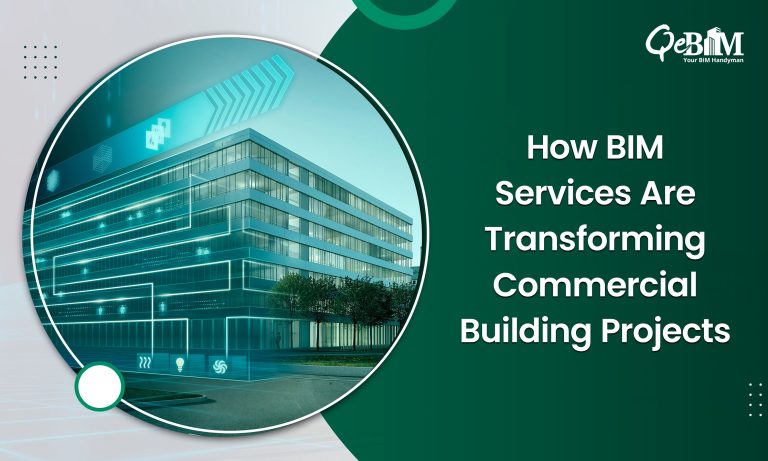How BIM Services Are Transforming Commercial Building Projects?

The commercial construction sector is undergoing a major transformation fueled by the innovative digital solutions. Among these, BIM has become a cornerstone for efficiency, accuracy and collaboration in large-scale commercial projects. BIM is not just a visualization tool—it is a comprehensive process that streamlines the project planning, design, construction and facility management.
1) Integrated Design and Multidisciplinary Collaboration:
In traditional construction workflows, design disciplines—architectural, structural, MEP often operate in silos thereby leading to misalignments and conflicts. With BIM services, all disciplines work within a unified digital model hence ensuring the multidisciplinary coordination. By enabling the real-time updates and model sharing, BIM reduces the errors that typically occurs due to the disconnected workflows. Advanced collaboration features in the BIM software allow the AEC professionals to review the changes instantly while also ensuring the design integrity throughout the project’s lifecycle.
2) Advanced 3D Modeling and Simulation:
BIM Modelling Services go beyond the simple 3D representations. They create parametric models embedded with the data about the materials, dimensions, performance characteristics and construction sequencing. These intelligent models enables the simulation of the building performance—lighting analysis, energy consumption, structural load behavior and HVAC efficiency. Such simulations provides the predictive insights thereby helping the teams to optimize the building performance even before the ground-breaking begins.
3) Proactive Clash Detection and Risk Mitigation:
The commercial projects are inherently complex as they involves numerous systems that must coexist seamlessly. BIM facilitates the advanced clash detection by automatically identifying the spatial conflicts between the structural elements and MEP systems. This proactive approach eliminates the costly on-site reworks, reduces the delays and also minimizes the risks during the construction. Furthermore, the clash reports generated from the BIM model provides the actionable insights for the project managers to resolve the issues efficiently.
4) Precise Cost Estimation and Construction Planning:
BIM services enhances the project management through the accurate quantity take-offs and construction sequencing. The estimators can extract the precise material quantities directly from the BIM model, improving the cost forecasting and reducing the budget overruns. Additionally, 4D BIM integrates time scheduling with the model thereby allowing the project teams to simulate the construction sequences, optimize the logistics and anticipate the potential bottlenecks drastically hence improving the efficiency on the commercial sites.
5) Lifecycle Management and Facility Optimization:
The impact of BIM reaches far beyond the construction itself. The digital twin of the building created during the design phase becomes a critical asset for the facility management. Owners and operators can access the detailed information about the building systems, maintenance schedules, warranties and spatial configurations. This facilitates the predictive maintenance, operational efficiency along with the sustainable building management throughout the facility’s lifecycle, demonstrating the BIM’s value right from the conception to operation.
6) Data-Driven Decision Making:
BIM centralizes the project data in a structured and intelligent manner hence enabling the stakeholders to make informed, data-driven decisions. Whether it’s evaluating the alternative design options, analyzing the energy efficiency or planning for the retrofits, the wealth of information in a BIM model allows for precise, evidence-based decision-making. This significantly improves the project outcomes, enhances the client satisfaction and supports the long-term sustainability goals.
Conclusion
For modern commercial construction projects, the adoption of BIM is no longer optional—it is a must. Collaborating with a trusted BIM Services Provider ensures the access to cutting-edge BIM processes, from intelligent BIM Modelling Services to 4D simulations and clash detection. By embracing BIM, commercial projects achieve higher accuracy, lower costs, optimized schedules and sustainable lifecycle management thereby transforming how the buildings are designed, constructed and even operated.